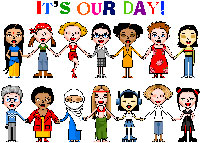知根知底婦女節(jié)
[ 2007-03-05 17:26 ]
雖然這篇文章依然脫不掉舊路�,依然得像眾多節(jié)日介紹一樣���,向您介紹3月8日的來歷及歷史淵源�,但我們試圖以最清晰的手法向你提供最有價值的信息��,如:國際婦女節(jié)的象征意義��、每年國際婦女節(jié)的主題���,如果愿意���,你還可閱讀一首關(guān)于婦女節(jié)的詩歌《面包和玫瑰》……
2007年國際婦女節(jié)的主題:Ending
impunity for violence against women and girls |
|
 |
| International Women's Day (IWD) occurs on 8 March annually and is
an occasion marked by women's groups around the
world. |
International Women's Day (IWD) occurs on 8 March annually and is
an occasion marked by women's groups around the world.
The first IWD was
held on 19 March 1911 in Germany, Austria, Denmark and other European countries.
German women chose this day because on this date in 1848 the Prussian king,
faced with an armed uprising, had promised many reforms, including an
unfulfilled one of votes for women.
In 1975, during International Women's Year, the United Nations
began celebrating 8 March as International Women's Day.
Two years later,
in December 1977, the General Assembly adopted a resolution proclaiming a United
Nations Day for Women's Rights and International Peace to be observed on any day of the year by Member States,
in accordance with their historical and national traditions.
For the
United Nations, International Women's Day has been observed on 8 March since
1975. The Day is traditionally marked with a message from the Secretary-General.
IWD today is an opportunity for women to come together and look
back on a rich history of struggle for equality, justice, peace and development
and to support this work in the present and future.
 The symbolic meaning of IWD The symbolic meaning of IWD
For the women of the world, the Day's symbolism has a wider
meaning: It is an occasion to review how far the women have come in their
struggle for equality, peace and development. It is also an opportunity to
unite, network and mobilize for meaningful change.
 The reason why the UN dedicates a day
exclusively to the celebration of the world's women The reason why the UN dedicates a day
exclusively to the celebration of the world's women
In adopting
its resolution on the observance of Women's Day, the General Assembly cited two
reasons: to recognize the fact that securing peace and social progress and the
full enjoyment of human rights and fundamental freedoms require the active
participation, equality and development of women; and to acknowledge the
contribution of women to the strengthening of international peace and
security.
 Bread & Roses Bread & Roses
In 1908, the socialist women in the United States initiated the
first national Women's Day when large demonstrations took place calling for the
vote and the political and economic rights of women.
During a parade
through Lawrence, a group of women workers carried banners proclaiming"Bread and
Roses, symbolizing their demands for not only a living wage but a decent and
human life. The banner has later inspired James Oppenheim’s song "Bread and
Roses".
"As we go marching marching in the beauty of the day
A million darkened
kitchens, a thousand mill lots gray
Are touched with all the radiance that a
sudden sun discloses
For the people hear us singing: bread & roses, bread
& roses!
As we go marching, marching, we battle too for men
For they are women's
children & we mother them again
(For men can ne'er be free til our
slavery's at an end)
Our lives shall not be sweated from birth until life
closes
Hearts starve as well as bodies, give us bread
but give us roses
As we go marching, marching, unnumbered women dead
Go crying thru our
singing their ancient call for bread
Small art & love & beauty their
drudging spirits knew
Yes it is bread we fight for, but we fight for roses
too
As we go marching, marching, we bring the greater days
The rising of the
women means the rising of the race
No more the drudge & idler, ten that
toil where one reposes
But a sharing of life's glories - bread & roses,
bread & roses!"
(英語點(diǎn)津陳蓓編輯) |